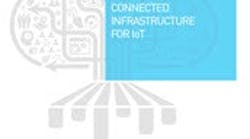The need an IoT Infrastructure is approaching faster than you think. With the Internet of Things (IoT) there are new and critical considerations to think about as one prepares for what’s ahead. Are you ready for it? To start planning and preparing now for a network infrastructure for IoT, we have to understand the requirements for power, light and data today. We have to be smart about the future. What will the world we live, play and work in be like 10-15 years from now? One can only guess, but there are some important things to consider today, when we design the infrastructure to support tomorrow’s needs being driven by billions of IoT connected devices.
In 2008 the number of things connected to the Internet exceeded the number of people on Earth 2012, the number of POE-powered devices was estimated at 100 million. By 2020, about 250 million cars are expected to be connected to the internet, and the number of IoT devices is estimated to exceed 100 billion objects, or about 26 smart objects for every human being on Earth. As another example, Amazon has sold over 3 million Echo wireless speakers and personal digital assistants in the U.S. since its launch in late 2014, including one million during the Christmas shopping season in 2015. More than half of the purchasers use it for more than just a voice controlled music streamer.
All of these IoT deployments creates data collection and management challenges. In this whitepaper from Legrand – we learn about the major benefits around IoT; and how to create an interconnected infrastructure which can support it all. For example, you need to have critical IoT building blocks which includes:
- IoT gateways enabling machine to machine (M2M) communications possible.
- Utilizing Edge technologies to help with migration of applications, data, and services.
- Using Fog Computing as an IoT architecture allows for collaborative advantages for mobile and digitized end-users.
- Enabling advanced security to create powerful Information Access Management (IAM) protocols.
In addition this paper discusses utilizing centralized versus decentralized architectures when it comes to deploying IoT strategies. Start planning now for enabling tomorrow’s connected infrastructure for IoT.
